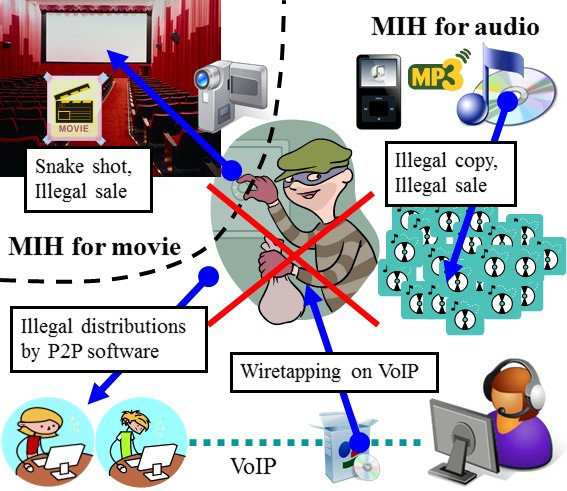
How can we implement a computational auditory model?
Laboratory on Acoustic Information Science
Professor:UNOKI Masashi
E-mail:
[Research areas]
Multimedia information hiding, auditory information processing, speech signal processing
[Keywords]
Audio information hiding, computational auditory model, modulation perception, speech security, deep learning
Skills and background we are looking for in prospective students
Students in our laboratory are required to have knowledge of psychology and physiology related to the auditory system, programming skills, presentation skills, and communication skills. This knowledge and these skills can be obtained by participating in the regular laboratory meetings.
What you can expect to learn in this laboratory
Students can gain wide research knowledge with regard to auditory, audio, and speech signal processing and communication skills to become experts. They can also have the chance to think logically, be creative, and have a profound insight into researching challenging topics. In particular, master’s students can learn the ability to resolve research issues by themselves while PhD students can learn the ability to think up research seeds and adaptively cope with various issues from various points of view.
【Job category of graduates】 ICT, SE/SI, Audio & Automotive Industries, Academic staff
Research outline
Humans can easily hear a target sound that they are listening for in real environments including noisy and reverberant ones. On the other hand, it is very difficult for a machine (i.e., a computer) to perform the same task using a computational auditory model. Implementing auditory signal processing with the same function as that of the human hearing system on a computer would enable us to do human-like speech signal processing. Such a processing system would be highly suitable for a range of applications, such as speech recognition processing and hearing aids. Achieving this is the ultimate goal of our research team.
The following research projects have used an auditory filterbank to process speech signals: the selective sound segregation model, noise reduction model based on auditory scene analysis, speech enhancement methods based on the concept of the modulation transfer function, and bone-conducted speech restoration model for improving speech intelligibility. We usually use the gammatone auditory filterbank as the first approximation of a nonlinear auditory filterbank in these projects. Our perspective is to model the 'cocktail party effect' and apply this model to solving challenging problems by developing our research projects using a nonlinear auditory signal processing.
In our current projects, we are developing audio information hiding techniques for speech security such as secure speech communication, and preventing the tampering of speech content on the Internet as shown in Fig. 1.

Fig. 1 Audio information-hiding techniques for speech security
Key publications
- Khalid Zaman, Melike Sah, Cem Direkoglu, Masashi Unoki, “A Survey of Audio Classification using Deep Learning,” IEEE Access, vol. 11, pp. 106620-106649, 2023. DOI: 10.1109/ACCESS.2023.3318015
- Suradej Duangpummet, Jessada Karnjana, Waree Kongprawechnon, and Masashi Unoki, “Blind estimation of speech transmission index and room acoustic parameters based on the extended model of room impulse response,” Applied Acoustics, vol. 185, Jan. 2022. DOI: https://doi.org/10.1016/j.apacoust.2021.10837
- Candy Olivia Mawalima, Kasorn Galajit, Jessada Karnjana, Shunsuke Kidani and Masashi Unoki, “Speaker Anonymization by Modifying Fundamental Frequency and X-Vector Singular Value,” Computer Speech & Language, 73, 2022. DOI: https://doi.org/10.1016/j.csl.2021.101326
Equipment
Equipment for psychoacoustical experiments
Sound-proof rooms and an anechoic box
Measurement system for room acoustics
Computer servers for machine learnings
Teaching policy
Unoki Laboratory aims to investigate the basis of human auditory perception and its mechanism by taking two approaches of the scientific research on human auditory systems and audio signal processing. Laboratory members have meetings and seminars to study the basis of these two approaches and brainstorm for improving their own abilities to be future researchers. Each student has his/her own project for his/her MS or PhD dissertation. All laboratory members can share information and have important opportunities for doing his/her own research as well as working with the best laboratory members.
[Website] URL:https://www.jaist.ac.jp/~unoki/lab/en/index.html